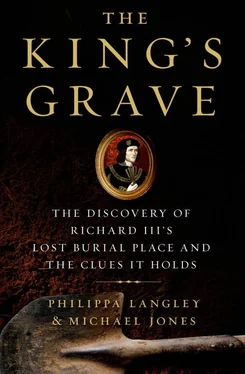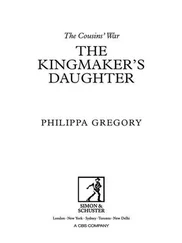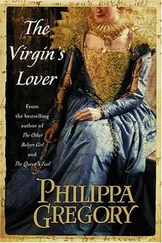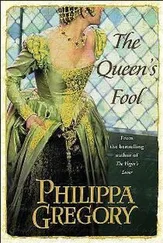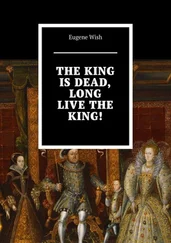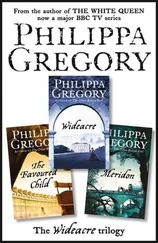Buckley dismissed the map, asserting that medieval maps are notoriously vague, but he nonetheless sat up. Finding the Greyfriars Church would be of interest to him, because he could learn so much about medieval Leicester and the layout of these friary churches from it. As I pushed for my preferred site, using Ashdown-Hill’s research into mendicant priories’ locations beside major roads, Buckley agreed it was a possibility. After discussing the Christopher Wren report on Herrick’s garden and its marker column, then the open car park spaces, ripe for archaeological investigation, and the GPR survey, Buckley declared he would be happy to look for the Greyfriars Church. So it was settled that, while he searched for the church, I would search for the grave of a king. Unlike Buckley, I had no reputation to lose. I asked how he rated our chances of success. He said, ‘Fifty–fifty at best for the church, and nine to one against finding the grave.’ He was a glass half empty kind of guy, while I was the glass half full kind of girl. He asked what I thought the chances were: I replied, ‘Nine to one on for finding them both.’ He laughed, asking what had driven me to this search. I told him about my screenwriting, and hopes of seeing Richard’s real story brought to life. I didn’t tell him about my intuitive feeling. But it didn’t matter, because Richard Buckley was on board and beaming and I wanted to hug him. The Looking for Richard project had taken a giant leap forward.
Thomas Roberts’s map of 1741 with modern overlay of trenches. A formal garden is visible to the east of the three trenches, thought to be the garden of Alderman Robert Herrick.
However, there was still the urgent need to find funding. Buckley mentioned Leicester University and its not insubstantial research budgets. ULAS, though an independent body hiring its offices from the university, worked closely with it. Buckley called Richard Taylor, the university’s Deputy Registrar and Director of Corporate Affairs, who thought the project had merit, and understood that the ULAS academic research would be in quest of the church. He asked what might be required of the university. Hesitant to bring in such a powerful player on the funding side, I asked for their specialists and expertise to be made available to the project free of charge. Taylor quickly confirmed that I had only to let him know what I needed, so I immediately mentioned the DNA unit and Professor Mark Lansdale, Head of the Psychology Department. Taylor agreed and said that if I needed extra funding once the dig was under way, the university would help. I asked how much. ‘If you find the Greyfriars Church, the wallet will open,’ he replied.
In March 2011, on Buckley’s advice, I commissioned ULAS to undertake the Archaeological Desk-Based Assessment (DBA). This is the preliminary research document drawn up to determine the archaeological viability of a site. It would be based on historical research, including detailed map regression, and analysis of any potential ground disturbance, together with the location of gas mains and electric and fibre-optic cables. The DBA would provide me, as the client, with the necessary professional green light to enable the dig to go ahead. I gave ULAS what information I had on the Leicester Greyfriars site. The cost of the DBA was £1,140, so I called Phil Stone because the Richard III Society had a bursary fund for original research to which I could apply. The joint secretaries, Sue and David Wells, helped prepare the request document, which Phil Stone gave to the Executive Committee who passed it immediately.
In April 2011, with the DBA completed, I asked ULAS where it intended to dig the first trenches. Richard Buckley explained that in order to pick up any trace of the east–west church walls beneath the surface, two overlapping thirty-metre trenches would run north–south which he hoped would bisect the walls. The trenches would also have to be positioned to maximize the remaining parking on site to help with costs. I pressed again for the northern end of the car park and Buckley confirmed that Trench One would cover the exact area I wanted; it ran right over the letter ‘R’.
The greatest expense of the dig was going to be the reinstatement work, turning the site back into a car park. I also had to find, and fund, interim parking for the Social Services for the duration of the dig, which we agreed would last for two weeks. Richard Buckley assured me it would be possible to dig three trial trenches in that time. I proposed the dig should take place over the Easter holiday period, April–May 2012, as this would give me time to get the funding, and broadcaster, on board. It would also reduce the cost of the off-site car parking. But in the meantime I had to raise an estimated £35,000.
Sarah Levitt told me that I would need permission from the team at the Greyfriars Social Services for the dig and the disruption it would cause. Their consent was vital; Levitt would not be able to overrule them if they refused. I was tense for my meeting with Mick Bowers, Head of Greyfriars Property Services. Bowers understood the dig would cause major headaches, but he’d spoken to his team, who were willing to take on the extra work-load involved because, they said, the search for Richard was a worthy one. Bowers would be in charge of matters at their end. It was a huge relief, and I thanked him. ‘Not a problem,’ he said, and smiled. I later discovered his wife was a Ricardian.
The next priority was to finalize the TV programme. The first-ever search for the grave of an anointed King of England was a good story, so someone would bite. It just so happened I had a certain someone in mind.
I had been a big fan of the documentary filmmaker Julian Ware for many years. He insisted on meticulous research, a sensitive approach and top production values. He was joint creative director of the award-winning Darlow Smithson Productions (DSP), which had just made WW1: Finding the Lost Battalions (July 2010), about amateur historian Lambis Englezos’s search for the lost graves of the 1916 Battle of Fromelles in France. Ware confirmed his interest in the Looking for Richard project, to be headed up by DSP’s Acting Head of Development, Simon Young, an archaeologist who had produced Finding the Lost Battalions.
A few weeks later, however, the project’s future was up in the air again. Sheila Lock (CEO of LCC) was ill, Chris Wardle, the City Archaeologist, was not convinced of its viability, and to cap it all Leicester was about to vote for its first elected mayor, the person who would then run LCC and therefore be able to kill the project stone dead.
Or not. In May 2011 Sir Peter Soulsby was elected Leicester’s mayor. He valued history and heritage (it was in his manifesto), so it was with some relief that a few weeks later Sarah Levitt confirmed he’d given the Looking for Richard project the green light. We were back on.
At the cathedral, the dean, the Very Reverend Vivienne Faull, welcomed the Reburial Document and expressed the cathedral’s readiness to accept the remains of King Richard Into its care, should he be found. Taking me to the sanctuary, the dean proposed that the tomb should be close to its northern wall. As I looked at the great east window dedicated to the fallen in battle, I felt her suggested place would be a fitting tribute and final resting place for England’s last warrior king.
But I still had to raise the necessary funds. Sarah Levitt put me in touch with Martin Peters, Managing Director of Leicestershire Promotions Ltd (LPL), responsible for marketing the county and city. With DSP on board, and a TV special in the offing with Channel 4, Peters understood the venture’s potential, and so agreed to fund the Looking for Richard project.
By early August 2011, with the £35,000 I needed, I had agreed terms with LCC as the landowner and ULAS as the contractor. As the client, my agreements repeated the Reburial Document’s ethos for the project: if we discovered Richard III’s remains, the science and analysis would be completed at the earliest opportunity. The two partners were aware that I was searching for a named individual with living relatives, and even though he had been dead for over 500 years, I wanted him granted the same decency and privacy as is laid down by the law governing exhumations of those who died less than a hundred years ago.
Читать дальше
